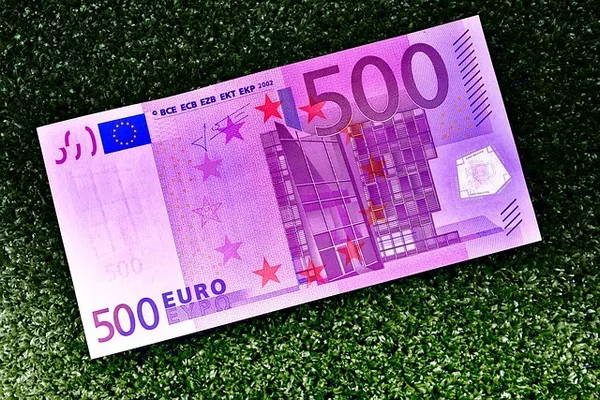In the intricate landscape of global economics, currency movements hold a paramount position, influencing trade, investment, and overall economic stability. Among the key currency pairs, the euro-dollar exchange rate stands as one of the most significant, given the economic weight of the Eurozone and the United States. A hypothetical scenario where the euro falls against the dollar prompts multifaceted considerations across various sectors. This article delves into the potential ramifications of such a depreciation, encompassing trade dynamics, investment flows, monetary policy adjustments, and broader macroeconomic implications.
Trade Dynamics:
A depreciating euro against the dollar could impact trade dynamics between the Eurozone and the United States in several ways. Firstly, Eurozone exports to the United States would become more competitive, potentially leading to an increase in export volumes. Conversely, imports from the United States would become relatively more expensive for Eurozone consumers and businesses, potentially dampening import demand. This shift in trade dynamics could result in a narrowing of the Eurozone’s trade surplus with the United States and an expansion of the U.S. trade deficit with the Eurozone.
However, the impact of a euro depreciation on trade balances is not solely determined by exchange rates. Factors such as the price elasticity of demand for traded goods, the competitiveness of domestic industries, and non-price factors like product quality and brand reputation also play crucial roles. Therefore, while a depreciation of the euro may boost export competitiveness in theory, its actual effect on trade balances would depend on the responsiveness of trade flows to price changes and other contextual factors.
Investment Flows:
A euro depreciation against the dollar could also influence investment flows between the Eurozone and the United States. Foreign direct investment (FDI) flows, portfolio investment, and cross-border lending could all be affected. A weaker euro may make Eurozone assets relatively cheaper for U.S. investors, potentially stimulating FDI inflows into the Eurozone. Conversely, Eurozone investors may find U.S. assets more attractive as the dollar strengthens, leading to an increase in portfolio investment outflows from the Eurozone.
Additionally, a depreciation of the euro could affect cross-border lending between the Eurozone and the United States. Eurozone banks may find it more expensive to borrow in dollars, potentially leading to a tightening of credit conditions. Conversely, U.S. banks may find it cheaper to lend to Eurozone borrowers, potentially increasing cross-border lending to the Eurozone. These shifts in investment flows and lending patterns could have implications for financial stability and the availability of credit in both regions.
Monetary Policy Adjustments:
Central banks in both the Eurozone and the United States would likely respond to a euro-dollar depreciation through monetary policy adjustments. In the Eurozone, the European Central Bank (ECB) may choose to implement accommodative monetary policy measures to counteract the deflationary pressures associated with a weaker euro. This could include lowering interest rates, expanding asset purchase programs, or providing liquidity support to banks.
Conversely, the Federal Reserve in the United States may adjust its monetary policy stance in response to the strengthening dollar. While a stronger dollar can help contain inflationary pressures by lowering import prices, it could also weigh on U.S. exports and economic growth. The Federal Reserve may therefore adopt a more cautious approach to interest rate hikes or asset tapering to support domestic demand and mitigate the adverse impact of a strong dollar on the economy.
Macroeconomic Implications:
Beyond trade, investment, and monetary policy, a euro-dollar depreciation could have broader macroeconomic implications for both the Eurozone and the United States. In the Eurozone, a weaker euro could boost export-oriented industries, leading to increased production, employment, and economic growth. However, it could also fuel inflationary pressures by raising import prices, potentially eroding consumers’ purchasing power and reducing real incomes.
In the United States, a stronger dollar could have mixed effects on the economy. On one hand, it could lower import prices, benefiting consumers and helping to contain inflation. On the other hand, it could weigh on export competitiveness, leading to a deterioration in the trade balance and exerting downward pressure on economic growth. Additionally, a stronger dollar could attract capital inflows, potentially leading to asset bubbles and financial market instability.
See also What Happens If The Euro Falls Below The Dollar?
Conclusion:
In conclusion, a hypothetical scenario where the euro falls against the dollar entails complex and interconnected implications across various dimensions of the economy. From trade dynamics and investment flows to monetary policy adjustments and broader macroeconomic outcomes, the repercussions of a euro depreciation extend far and wide. While a weaker euro may enhance export competitiveness and stimulate economic activity in the Eurozone, it could also pose challenges such as inflationary pressures and financial market instability. Conversely, a stronger dollar may benefit U.S. consumers through lower import prices but could hinder export-led growth and exacerbate trade imbalances. Overall, navigating the effects of currency movements requires a nuanced understanding of the underlying drivers and their impact on different sectors of the economy.


